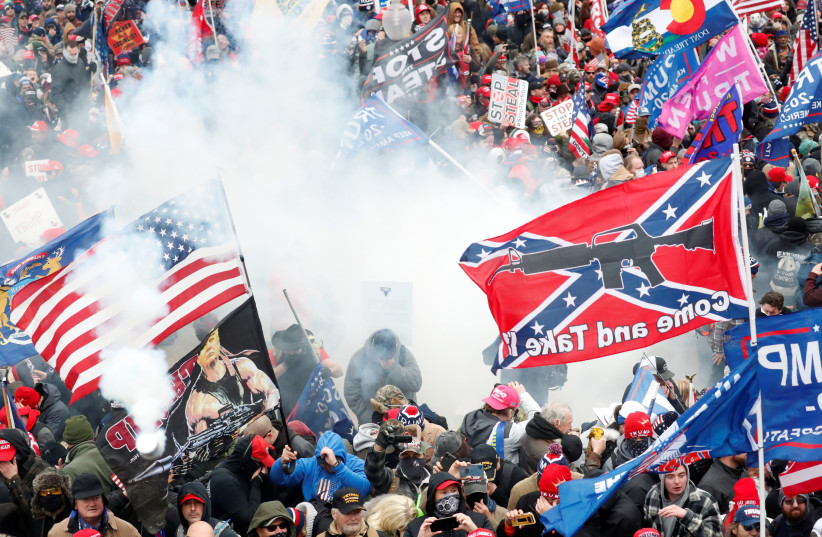It is still unclear how much ideology, mental illness or both of the above motivated the Highland Park, Illinois, mass shooter. But the shooting did bring home how inadequate the bipartisan gun control law passed in the US on June 24 will be to reel in mass shootings in America.
That law increased oversight and restrictions for 18-to-21-year-olds who have not yet purchased guns; expanded authority to report on and withdraw guns from violent “boyfriends”; and increased the need for awareness of mental health issues that can turn violent.
However, it did not address America’s domestic terror challenge. The additions to gun control fell far short of the red flags and restrictions in most countries, and did not deal with the violence that has exploded in the era of social media.
Domestic terror is rampant in the US

The arrests and trials of January 6, 2021, Capitol rioters provide a lens into the issue’s complexity.
Around 2,000 US citizens are said to have broken into the Capitol in Washington. About 900 of them have been arrested and face charges, and over 300 have pleaded guilty to a variety of misdemeanor crimes related to their actions while breaking into the building.
Think tanks that study extremist groups, like the National Consortium for the Study of Terrorism and Responses to Terrorism (START) at the University of Maryland, found a half-dozen groups deeply involved in the break-in.
These groups included well-known names like the Proud Boys, QAnon and the Oath Keepers, but also lesser-known groups like Super Happy Fun America, the Woodland Wild Dogs and America First Bruins.
According to START’s research, the web of exchanges, influence and counter-influence will not be shut down simply by sending the ringleaders or even a few hundred harder-core activists to jail. Rather, a much larger group connected to those 2,000 activists is engulfed in this social subset that pushes people in a violent direction.
As Louis D. Brandeis Center Chairman Kenneth Marcus wrote after the mass shooting in Buffalo on May 14, we are in an age where too many people have been infected with hateful ideologies.
White supremacist scourge
White supremacists are certainly statistically the largest domestic terror problem in the US, but black supremacists and radical Islamists are also threats.
Furthermore, all of the above can heighten the threat to Jews, regardless of how many American Jews have white skin. Antisemitic conspiratorial thinking seems to be a significant piece of various groups’ hate ideology.
Contributing causes were the trauma of the pandemic, increased polarization among top political leaders, and the impact of social media.
But Americans will not be safe until leaders of both political parties, all relevant law enforcement agencies, and experts who can help de-radicalize people unite to confront the issue as a top-line item with which the nation is struggling.
Of course, it would also be easier to avoid mass shootings if ordinary civilians were not entitled to possess semi-automatic weapons, or if permission for these weapons was much harder to get.
In the case of the Highland Park shooter, law enforcement, fellow students and the shooter’s father all failed to report him or otherwise place obstacles in his way.
Social media is not only a part of what has caused the problem but an enormous part of what the solution will need to be.
It is only very recently that social media networks have started to remove extremist posts or report some of the posts to law enforcement.
Without enforcing its core removal and reporting mission, and without law enforcement imposing direct oversight over social media giants, bipartisan patriotism will get gun control nowhere.
Israel and parts of Europe have already altered their relationship with social media. Until the US gets serious, social media will continue to be a swamp for extremists to coordinate, egg each other on, and display violent videos that teach tactics and “inspire” the next mass shooting.
